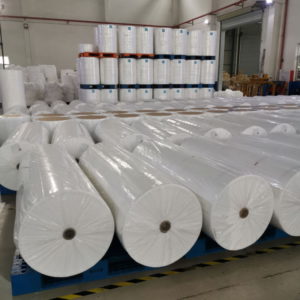For cutting delicate fabrics, I would recommend using a rotary blade cutter, specifically one with a smaller blade size and a smooth cutting action. Rotary cutters are versatile and can handle a wide range of fabrics, including delicate materials such as silk, chiffon, satin, and lightweight knits. The smooth rolling action of a rotary cutter allows for precise, clean cuts without putting excessive pressure on the fabric, minimizing the risk of fraying or distorting the delicate fibers.
When choosing a rotary blade cutter for delicate fabrics, consider the following:
Blade Size: Opt for a smaller blade size, such as a 28mm or 45mm blade, as it provides better control and maneuverability when cutting intricate designs or curves.
Sharpness: Ensure that the blade is sharp and made of high-quality materials to ensure clean and effortless cuts. Dull blades can snag or pull the fabric, leading to damage.
Ergonomics: Look for a rotary cutter with an ergonomic handle design that offers a comfortable grip and reduces hand fatigue during prolonged cutting sessions. This is especially important when working with delicate fabrics, as it requires more precision and prolonged cutting may be necessary.
Cutting Mat: Pair your rotary cutter with a self-healing cutting mat. These mats provide a soft and protective surface for cutting delicate fabrics, preventing the blade from damaging the cutting surface and ensuring clean cuts.
Remember to practice cutting on a scrap piece of the same fabric before working on your actual project. This will allow you to familiarize yourself with the cutter’s pressure, speed, and technique, ensuring the best results while minimizing the risk of damaging the delicate fabric.
Overall, a rotary blade cutter is a reliable choice for cutting delicate fabrics due to its precision, control, and ability to minimize fraying.
Do you have any suggestions for beginner-friendly sewing books that cover rotary blade cutter techniques?
Here are a few beginner-friendly sewing books that cover rotary blade cutter techniques and can be helpful for those starting out:
“Sewing School: 21 Sewing Projects Kids Will Love to Make” by Amie Petronis Plumley and Andria Lisle: This book is geared towards children but is also great for beginners of any age. It covers basic sewing techniques, including rotary cutting, and provides step-by-step instructions for various projects.
“First Time Sewing: The Absolute Beginner’s Guide” by Editors of Creative Publishing International: This book offers a comprehensive introduction to sewing for absolute beginners.melt blown nonwoven fabric machine covers essential sewing techniques, including rotary cutting, and provides easy-to-follow instructions and projects to practice your skills.
“Sew Everything Workshop: The Complete Step-by-Step Beginner’s Guide” by Diana Rupp: This book is a beginner’s guide to sewing and covers a wide range of techniques and projects. It includes sections on fabric selection, cutting techniques (including rotary cutting), sewing machine basics, and more.
“Simple Sewing: 30 Fast and Easy Projects for Beginners” by Katie Lewis: This book focuses on simple sewing projects for beginners and covers the basics of sewing, including rotary cutting. It provides step-by-step instructions and helpful tips to build your sewing skills.
“The Sewing Bible: A Modern Manual of Practical and Decorative Sewing Techniques” by Ruth Singer: This comprehensive sewing reference book covers a wide range of techniques, including rotary cutting. It offers detailed instructions, illustrations, and tips for various sewing projects.
These books provide a solid foundation for beginners, covering essential sewing techniques along with rotary cutting. They often include illustrations, photographs, and clear instructions to help you understand and practice the techniques effectively. Remember to choose a book that aligns with your specific interests and projects to make the learning process more enjoyable and relevant to your sewing journey.
